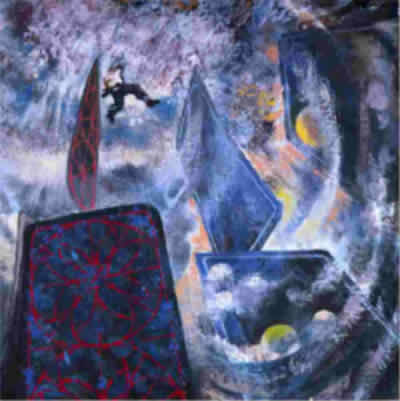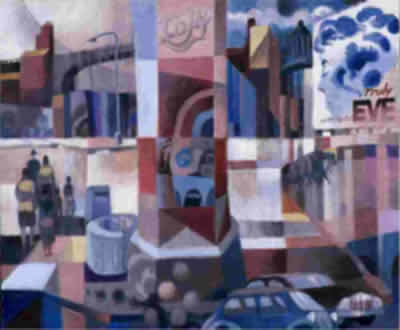|

Newton Myers
Pratt Institute
About a thousand years ago Lao Tzu said "Be completely whole and everything will
come to you." To me, to be completely whole means opening a direct and continuous pathway to the subconscious mind.
It means to make no important decision without consulting this deeper source.
My guess is that less than one percent of the people in the world do this. Among
that one percent are the highly creative people. These are often driven people. People like Beethoven and Kafka.
Franz Kafka said: "Just learn to become still and solitary and the world will freely offer itself to you to be
unmasked, it has no choice. It will roll in ecstasy at your feet."
This is an exact description of the ambience and technique necessary to create
the trance state that opens the subconscious. But how many can do it based on this precise but meager description?
What is not revealed in Kafka's instructions is the necessary undercurrent of emotion that throws the door open.
For the subconscious is a deeply emotional mind. Any extreme of emotion from black despair to unbounded joy will
move the mountain.
In my opinion all great art culminates during the crisis part of creation at the
end when the trance state completes everything automatically outside the artists conscious control. She/he feels
that someone or something else is operating their painting arm. This is what Picasso meant by saying: "When I paint,
I am not in my body."
I have experienced what Picasso is talking about. I find that I have both little
trances in my work as a painter. As an example of a little trance, I am painting a panoramic scene of a stage set.
I struggle to get the clouds right on the backdrop over and over. Suddenly I go into trance and zap the clouds
out, in one two or three rapid Zen strokes in two or three seconds, automatically.
CLICK ON THE PICTURE TO SEE LARGER PHOTO

As an example of a large trance, I am painting a gigantic mural in a medical condominium.
I have been working on it about 6 months and am halfway finished. On this particular day I am tremendously elated
to be painting this mural, as I had always wanted to paint a mural. Suddenly, I flip into trance and paint the
whole last half of the mural automatically. This means that I don't remember doing it. Someone or something else
was operating me. I have absolutely no memory whatsoever of painting, mixing paints or planning anything of the
last half of the mural. It is the best thing I have ever painted.
CLICK ON THE PICTURE TO SEE LARGER PHOTO

I have been exploring how to teach my students the art of trance and the use of
trance in art. I find that visualization is a powerful subconscious technique and offers a path into trance. In
the method I teach, the visualizer actually sees a series of sequential pictures in answer to an emotionally important
question. These pictures are interpreted the same way dreams are interpreted and bring an answer to the question
posed. Visualization was used by Edison, Einstein and Tesla, among many others. I find that my students can use
this process.
In the classroom, I induce a visualization trance in my students. I have them
prepare by instructing them to uncross their arms and legs, loosen any tight belts or any constricting clothing.
I soften the lighting and maintain a temperature in the room. As people familiar with guided meditations and hypnotic
journeys know, there is so much to the induction than the text of the instructions. There is an atmosphere about
it. There is a matter of timing and tone of my voice, getting softer and slower, and watching the students appearing
softened and in a relaxed state.
The induction itself is not what puts the students into trance. They put themselves
into trance. I am but a coach. I find the students need an extended pretalk to win them over. They must trust and
be willing to follow. They need practice. Although they could do this on their own, I prefer to lead them myself
at first. If they try it haphazardly on their own and fail it will be discouraging and they may not wish to try
again. A first successful experience under the guidance of a pro is better than an amateur fumbling around on their
own.
Newton Meyers is a professor at Pratt Manhattan in New York City where he teaches a course
entitled: Visualization for Artists, Writers & Creative Thinkers. You can email him at ncmeyers@concentric.net
or call him at (718) 852-7636
|

